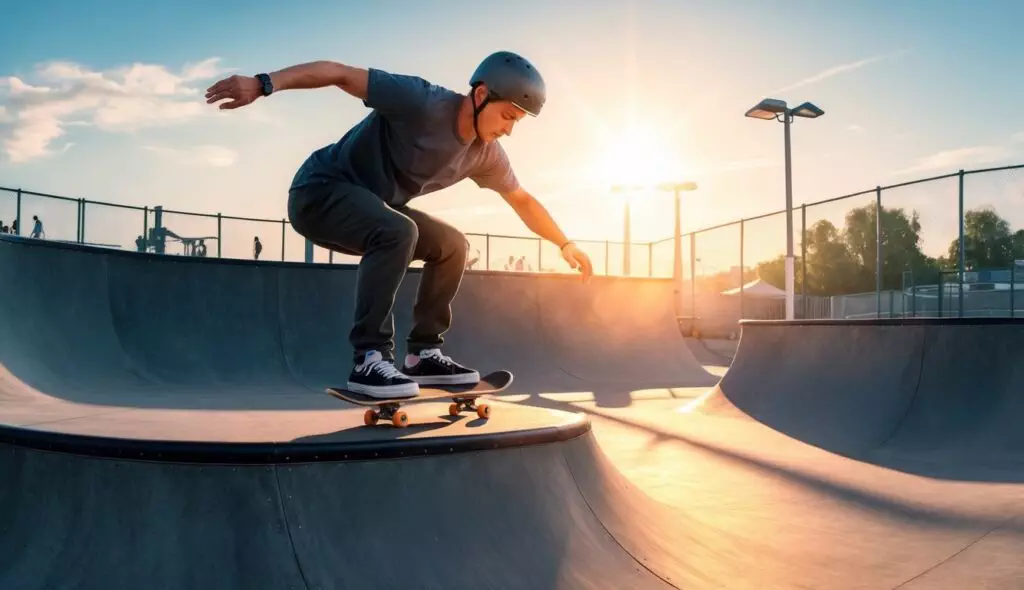If you just started skating and are starting to feel some aches and pains after your session and wonder why your feet hurt when skateboarding, you’re not alone. Skateboarding works every part of your body and requires a tremendous amount of both upper and lower body strength. This can lead to soreness after an especially long day of skating.
Of all the parts of the body that are susceptible to getting hurt, your feet are probably the most vulnerable. This is because your feet are supporting all your body weight while on the board.
Your feet can get especially sore if you’re riding for many hours and trying to perform a lot of tricks. In this post, we will give a brief overview of why a skater’s feet can hurt after skating for a while, and what you can do to prevent them from hurting so much in the future.
Why Feet Hurt When Skateboarding
While having general soreness in your feet is not uncommon after a long skate day, you shouldn’t be in excruciating pain. If you are, this could be a sign of a serious injury. Foot and ankle sprains are some of the more common skateboarding injuries. This is especially true when performing a lot of tricks and jumps on your board.
Just one wrong movement when landing a kickflip can lead to foot and ankle fractures, which is why it is important to be careful when trying to perform advanced maneuvers. Having the proper footwear and other protective gear can help mitigate the risk of major ankle injuries.
Plantar Fasciitis
Aside from direct injuries, a painful foot can also be attributed to a condition known as plantar fasciitis. This condition is characterized as an inflammation of a thick band of tissue that connects the heel bone to the toes. While only a proper diagnosis can confirm whether or not you have it, there are some things you can do to combat the pain associated with this ailment.
Proper Skate Shoes
We recommend buying skate shoes that have great arch support and adequate padding to absorb the impact of landing on your board after doing a jump or other trick. Having properly supportive shoes can also help you avoid any significant foot and ankle injuries and can greatly assist with any heel pain you might be experiencing.
Injuries Can Lead to Foot and Ankle Pain
Minor bruises could be a major contributing factor to foot pain. When bruising your foot by landing awkwardly after catching air or grinding down a ledge, it is recommended to apply ice on your foot to control swelling. Wear protective gear and make sure to be careful when trying new tricks to avoid any serious lower extremity skateboard injuries.
If you experience any major injuries and your foot pain will not go away, you might want to see a doctor to ensure a proper diagnosis. If the injury is bad enough, it could require surgical repair.
Summary
Overall skateboarding is a very physically demanding sport, and because of this, it can lead to foot and ankle pain. Luckily, there are some preventative steps that you can take to ease this pain. While many of these injuries range in severity, the truth is, that having foot pain when skating is not uncommon.
With that in mind, it is important to listen to your body. If your pain is persistent, we recommend seeing a podiatrist who can accurately diagnose the issue. Some pain will be unavoidable, but it should not go ignored if it continues and increases in severity.
In the end, skating can be a lot of fun, but it can also be pretty hard on your feet. This is why it’s so important to get the proper skate shoes that have enough padding to absorb the impact of landing when catching air or even performing a simple kickflip. Having the right shoes can make a huge difference in the amount of pain you experience from day to day and can keep you on your board longer without having to deal with any unpleasant pain.
If you’re new to skating, the pain in your feet can get better once you condition them for a while. However, if the pain persists, it might mean that it’s time to see a foot doctor.
